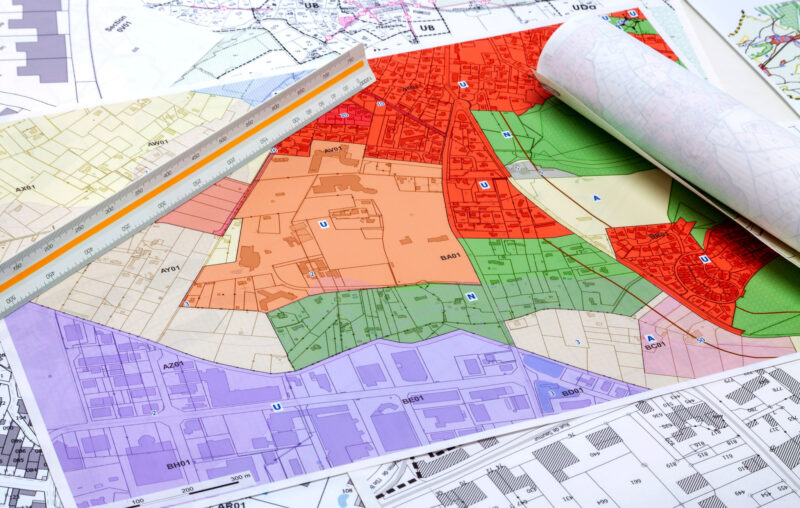Zoned Out: How Housing Regulation Drives Young Americans Toward Socialism

The generational gap in partisanship is as wide as it has ever been. Generation Z and millennial Americans are far more Democratic and left-wing than older Americans, and this gap remains as millennials are getting older. A 2019 poll even found that socialism is as popular as capitalism among young US adults, although “free enterprise” remains popular among all generations.
While social and environmental issues are part of the reason why young people lean left these days, economics also plays a role. It is hard not to notice that young Americans especially began to move left in the 2010s, a decade marked by rising costs in the key sectors of housing, higher education, and healthcare. Younger Americans are partly insulated from problems in the healthcare sector by their better health than other adults, but expensive housing and higher education have hit them particularly hard.
Around the 2022 midterms, a combined 60 percent of voters under 30 saw inflation, housing costs, or both as one of their top three issues. There’s a great deal of resentment among Gen Z and millennials against Baby Boomers’ perceived “opportunity hoarding”: they benefited from cheap college and cheap houses, and now they’re pulling up the ladder.
Housing costs have indeed risen a lot since the early 2010s. Looking at either the sticker price of a house or the monthly cost of a mortgage is misleading, since mortgage costs vary with interest rates, mortgage standards tightened substantially after 2007, and minimum down payments vary with sticker price. It’s better to look at rents, and we should also try to correct for the quality of housing. The United States Bureau of Labor Statistics tries to do this with their “cost of shelter” index, which in addition to observed rents includes the imputed rents that owner-occupiers could have earned by renting out their homes. They also try to adjust for changing product quality. Figure 1 shows how the cost of shelter has changed since January 1980 compared to the cost of other goods and services.
Figure 1: Cost of Shelter vs. Total CPI
Shelter has been rising in cost more quickly than other goods and services. Since the 1982-1984 average, shelter has gone up by 280 percent, compared to 204 percent for all goods and services. The growing difference accelerated in the mid-2010s, with shelter going up 38 percent since January 2015, while all goods and services have gone up by only 29 percent.
But these national numbers are misleading, because the housing crunch for most of the last decade has been concentrated in a few metropolitan areas. Figure 2 shows the index of rental cost produced by the Bureau of Economic Analysis for four metropolitan statistical areas (MSAs) and the year 2021: Boston, Houston, Miami, and San Francisco. San Francisco is notoriously restrictive of new housing: No new housing development is allowed by right. The Boston area has a patchwork of policies but is generally among the more restrictive metro areas. Houston famously has no zoning, although some of its suburbs do. Miami is a place that had strong pandemic demand plus some geographic constraints on building (the Atlantic Ocean and the Everglades).
The numbers here are percentages of the national average. Rents in San Francisco are therefore over 210 percent of the national average, while Houston is down around the national average, and Boston and Miami are between the two. The problem of housing cost is a different conversation in different places.
Figure 2: Rents by MSA
Government zoning regulations that limit homebuilding are a big factor in housing costs over the long run. A lot of research has shown this, but so does common sense. Look at the populations of Boston, Houston, Miami, and San Francisco over time. Between 2010 and 2020, Boston’s county (Suffolk) grew 2 percent, Houston’s county (Harris) grew 16 percent, Miami-Dade grew 7 percent, and San Francisco County grew 8 percent. Clearly, San Francisco’s huge expense is not solely a result of hot demand; otherwise, its population growth rates would be much higher than those of the others. Boston also looks pretty bad when you compare rents to population growth, while Houston looks amazing. It has accommodated rapid growth at moderate rents.
Figure 3 shows how states with stricter land use regulations have higher cost of living. Correlation doesn’t automatically imply causation, but in combination with the other evidence, this chart looks like a smoking gun.
Figure 3: Land Use Regulation and Cost of Living
The Yes in My Back Yard (YIMBY) movement is trying to change the dynamic whereby high-demand areas start restricting building, ultimately causing housing costs to go way up. There’s good reason to think that if they succeed, they’ll reduce the demand for radical left-wing policies among those who resent their struggle to pay rent.
Right now, left-of-center states and localities are experimenting with rent control and public housing, would-be solutions to the problem of rising rents that economists know are incredibly costly. Simply reforming zoning would be a better solution.
There’s also evidence that strict zoning makes areas more left-wing over time. Figure 4 shows the relationship between state-level inflation and movement toward the left in presidential elections. (The data series end in 2007 and 2008 because this particular dataset of state cost of living doesn’t go past 2007, and new datasets don’t go before 2008.)
Figure 4: State Inflation and Left Ideology
My research shows that the effect is causal and consistent: A standard-deviation increase in housing regulation makes a place shift toward the Democrats about three percentage points over the next eight years, because noncollege voters, who are becoming the Republican base, move out.
“But won’t building apartment high-rises bring in more Democrats than Republicans?” I often hear. Yes, usually, but by increasing housing supply these high rises will make single-family homes cheaper in the suburbs, keeping blue-collar families from moving to Texas or Florida. And building tract subdivisions in the suburbs directly helps blue-collar families stay put.
Many Democrats and progressives are at least somewhat free-market on housing, because they want to keep rents down. That’s admirable. On the other hand, democratic socialist types insist on harmful “solutions” like rent control and public housing. Republicans and conservatives have largely sat on the sidelines of zoning reform so far. But the data strongly suggest that to fight the radical left, we need to build more homes.










